What is the Gutter of a Book?
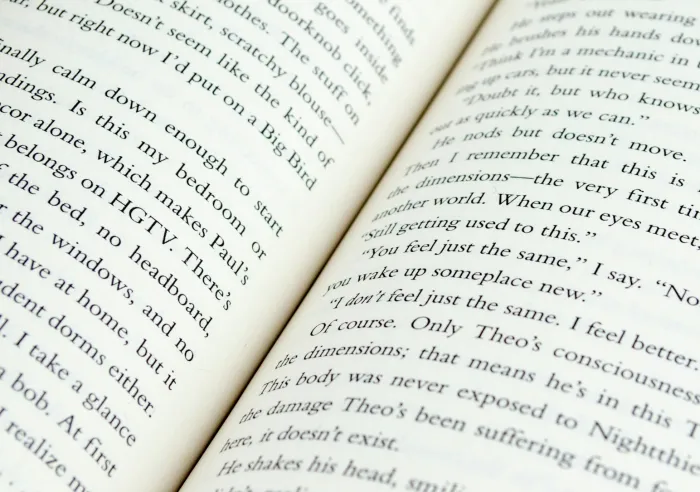
estimated reading time: 4 minutes
The Gutter refers to the space that runs between two facing
pages of an open book. It is the area where the left side pages and the right
side pages meet at the spine.
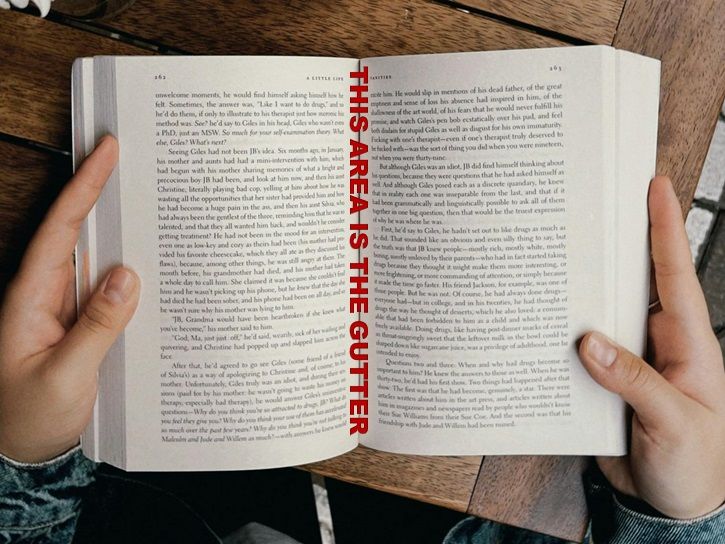
A portion of the gutter area is often made unusable by the
binding process. When this occurs, the book's inner margins are expanded to compensate
for this gutter loss. The degree to which the gutter area is affected largely depends
on the type of binding used to create the book.
As mentioned, the inner margins (also known as the gutter
margins) may need to be enlarged to prevent important content from becoming hidden
in the gutter. That said, let's examine the different binding types to learn how each
affects the gutter area…
Perfect Binding
Perfect Binding uses a strong glue to secure a book's pages
within a wraparound cover. The glue anchors the pages tightly together at the
spine, so any content placed too close to where the binding glue is applied
might be difficult to see when the book is being read. This is because the tension
created from the firm grip of the glue limits how flat the pages can lie when
the book is opened.
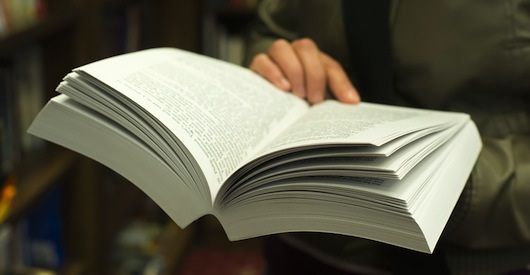
In addition, the pages of an open perfect bound book will often exhibit some curvature as they radiate out from the spine. This curvature is another reason why text or other content might appear to be "swallowed up" by the gutter.
You have likely read books in the past where the text was obscured by the curvature of the pages, requiring you to continually press down on the pages near the center of the book in order to read the content closest to the spine. Needless to say, this leads to a poor reading experience.
The more pages the book has, the greater the potential for
content to sink deeper into the gutter and out of view. To compensate for this
issue, additional width is often added to the inner margins to help ensure important
content is pushed further out from the binding edge so it can be viewed as
intended.
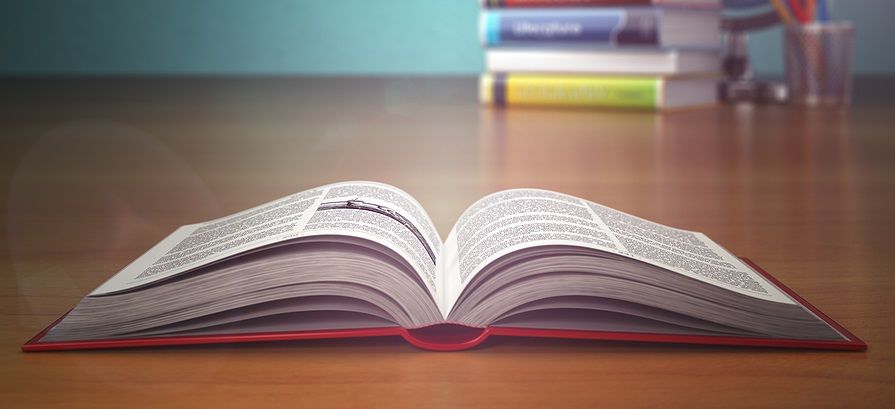
Hardcover Binding
Depending on the construction method, the pages of hardcover books are either sewn or glued in place (or a combination of sewing and gluing).
As such, hardcover books will experience the exact same issues as perfect bound
books if the inner margins are not ample enough to prevent important content from
getting lost in the gutter.
Saddle Stitch Binding
Saddle Stitched books are made from folded sheets that are
bound with wire staples placed through the fold line. Unlike perfect binding
and hardcover binding, the use of the saddle stitch binding method is limited
to books with lower page counts.
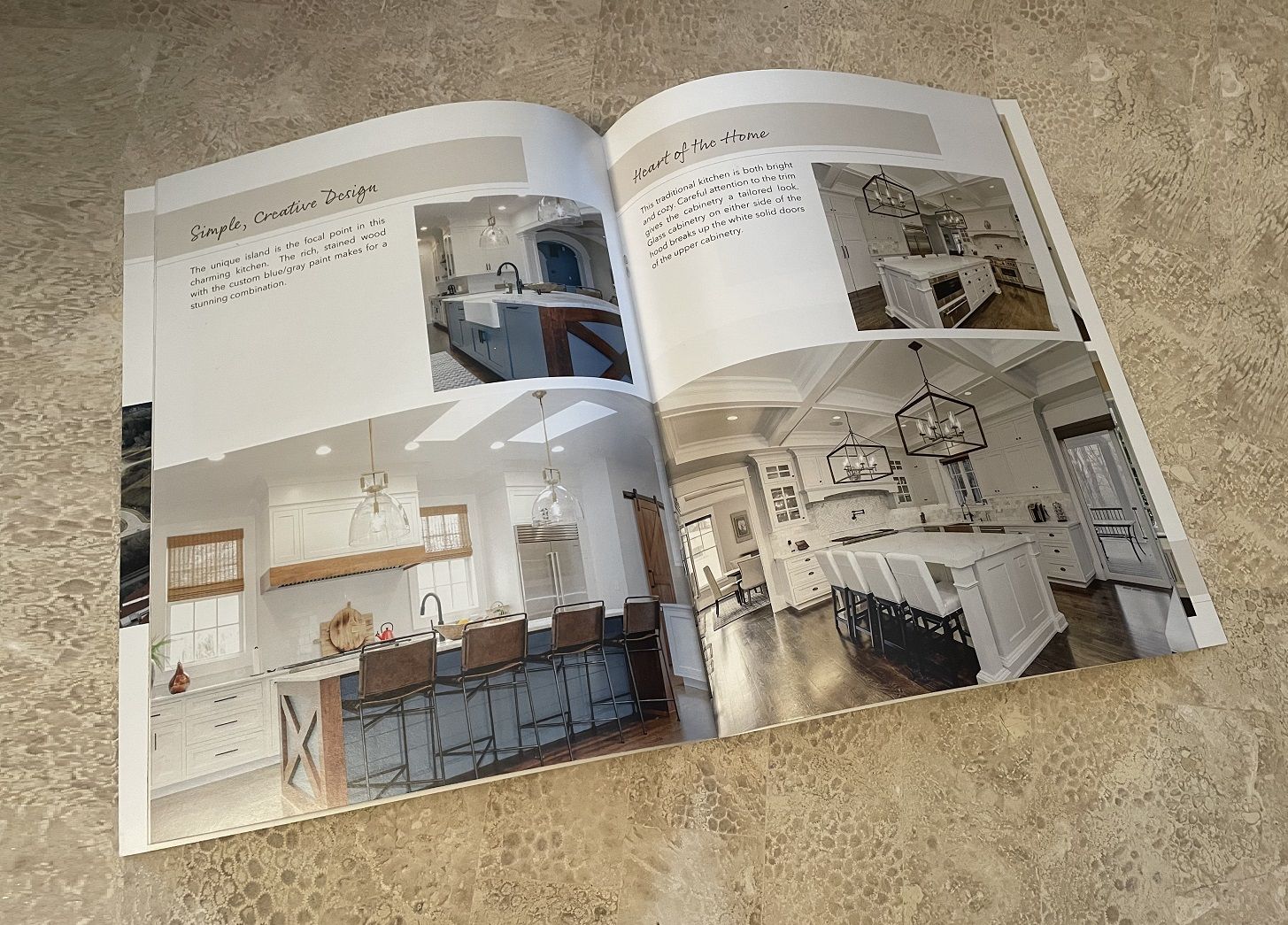
Because of the relatively low page count, the spines of saddle-stitched
books are thin and do not contain much tension. Hence, the pages can be opened
fully. There may be some page curvature but it rarely interferes with content located
near the spine.
For aesthetic purposes, saddle stitched books should still have ample margins around blocks of text. However, the inner margins do not have to be widened to the same degree as a perfect bound or hardbound book.
Coil Binding, Wire-O Binding, and Comb Binding
Books created with a Punch and Bind method, such as Coil
Binding, Wire-O Binding, or Comb Binding, use preformed spine elements that are
inserted through holes or slots punched along one edge of the book's
pages and cover.
Unlike perfect binding, hardcover binding, or saddle-stitching,
books made with a punch and bind method will have a physical gap between the
left side pages and the right side pages when the book is open. Hence, there is
zero spinal tension and all of the book's pages will lie perfectly flat.
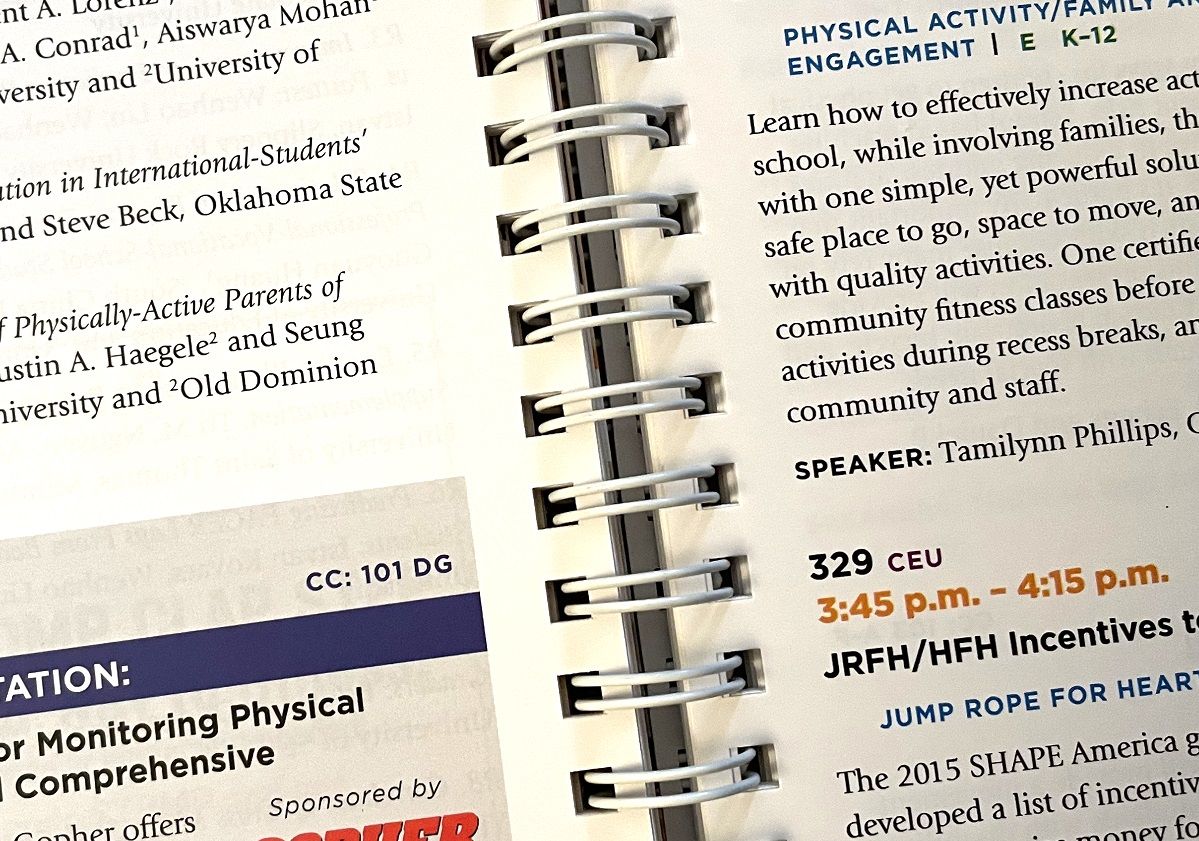
Even though the pages lie flat and there are no true gutter
or page curvature issues to contend with, the inner margins do have to be wide
enough to compensate for the punched holes and spine elements. Because these
spines actually penetrate through the face of each page, the plastic or wire
spines themselves can obstruct printed content. Therefore, the inner margins
have to be wide enough to allow for the placement of the book's spine.
Color Vision specializes in Book Printing!
Color Vision has been producing quality books at
affordable prices since 1984. Because we have both digital and offset presses,
we can print books in short, medium, or long production runs. We also offer a
wide array of printing, binding, and finishing options to help make your book
unique.
If you have an upcoming book project and would like to
receive a quote by email, please complete our Quote Request form. Or, if
you prefer to discuss your project by phone, we can be reached
at 800-543-6299.
As always, we hope to hear from you soon and look forward to
assisting with your next book project!
Related Articles
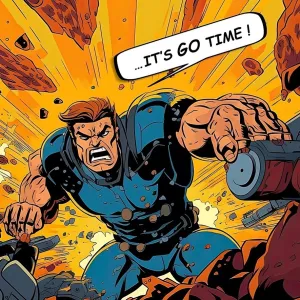
Creating a Comic Book? Here’s some Advice from a Printer
Read This Article

Perfect Binding vs PUR Binding: What is the Difference?
Read This Article

Perfect Bound Book Printing: Tips for getting the Best Value
Read This Article

How Much Does It Cost to Have Books Printed?
Read This Article